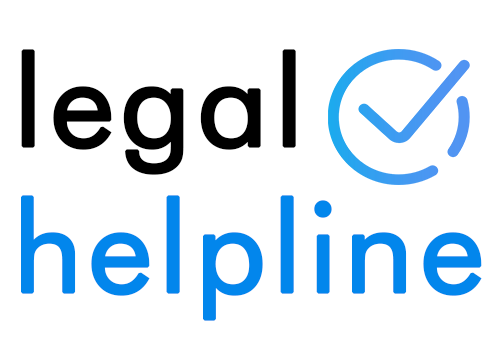If you have been involved in an accident that wasn’t your fault and suffered an injured wrist then you can call Legal Helpline on 0333 000 0729 for advice on a wrist injury claim to see if you qualify for compensation.
Although only a small area of the body, wrist injuries can actually be very debilitating as they are used, along with the hands, to do everyday things that we take for granted. Simple things can all be affected by wrist injuries such as getting washed and dressed, eating and drinking, playing sports and so on, so to suffer with a wrist injury that may possibly affect the ability to do some of or all of these things that we tend to do on ‘auto-pilot’ can have a sudden huge negative impact on our everyday lives.

There are a number of different injuries that can affect the wrist with the most common being sprains, soft tissue injuries, fractures or breaks, which may be the result of a number of different possible accidents that could occur. If you have suffered a wrist injury such as a fractured distal radius and it wasn’t your fault, you may be entitled to make a wrist injury compensation claim. If you’d like to find out more on how to claim compensation for a wrist injury, it’s a good idea to speak to a reputable personal injury claims management firm such as Legal Helpline. Legal Helpline works with a friendly panel of experienced solicitors that can help and guide you on how you can make a successful wrist injury claim. To learn more about wrist injury claims, please read on.
Jump to a Section
- A guide to claiming compensation for a wrist injury
- Common forms of wrist injuries
- Establishing who’s at fault for your wrist injury
- Are you entitled to compensation for your wrist injury?
- How much compensation can be claimed for wrist injuries?
- Wrist injury compensation calculator
- No Win No Fee claims for a wrist injury
- Useful Links
A guide to claiming compensation for a wrist injury
Wrist injuries can range from minor to severe but even the minor injuries can cause a lot of pain and discomfort. But as well as that, the fact that we use our wrists all the time without really thinking about it, if we suddenly were unable to, we would be at a real loss as we would suddenly be prevented from doing the majority of our everyday activities, even simple actions such as washing our hands could become a real task with an injured wrist. Certain jobs may become impossible until the injury has healed leaving people at a financial loss, or constant personal care may be required for a time which could cause a level of embarrassment for some. In fact there are many areas within our lives where having an injured wrist could have a huge negative impact.
If you have suffered a wrist injury due to someone else’s negligence, then you should be entitled to make wrist injury compensation claims for the pain and suffering you endured and for any financial losses you may have incurred as a result of your injury. However, making wrist injury claims can be a bit of a minefield and quite confusing at times. Therefore, Legal Helpline have put together this guide to give lots of information on how to make a compensation claim, what’s involved, average wrist injury settlement amounts and much more. After reading through the guide, feel free to call Legal Helpline for further guidance and to find out how we can help you to make a successful claim.
Common forms of wrist injuries
The wrist is primarily made up of two main bones that are in the forearm, the radius and the ulna, and also eight different carpal bones called the navicular / scaphoid, the triquetrum, the lunate, the trapezium, the pisiform, the capitate, the trapezoid and the hamate. The bones are surrounded by muscle and tendons and held together by ligaments.
Any damage that occurs to any of the parts of the wrist could result in a number of different injuries, with some leading to wrist injury claims. The most common types being:
- Sprains – Usually occur when the ligaments are stretched or torn.
- Strains – These occur when the muscles or tendons are stretched or torn.
- Tendinitis – This is where the tendons become inflamed and is commonly found in cases of a repetitive strain injury (RSI) occurring.
- Breaks and Fractures – Where any of the bones are cracked or broken.
Establishing who’s at fault for your wrist injury
Probably one of the trickiest parts of making wrist injury claims, is proving who is liable for your injury as it’s not always clear as to who is to blame. When setting out to establish who is liable, you first need to consider where the accident took place.
- In the workplace – If your wrist injury occurred due to an accident in the work place such as a slip, trip or fall, or perhaps due to a repetitive task, it’s possible that your employer is liable. Employers have a common duty of care to all employees to provide a safe working environment. It is quite clear in the Health and Safety At Work etc Act 1974, The Management of Health and Safety At Work Regulations 1999, and the Workplace (Health, Safety and Welfare) Regulations 1992, what their duties are to ensure the safety of their employees. They are required to have up to date, adequate and appropriate health and safety policies and procedures in place and should ensure all staff are sufficiently trained to ensure these are adhered to correctly. They are also required to carry out regular risk assessments for certain tasks to identify any potential problems and see there is something put into place to counteract any problems found. Any training appropriate to the tasks being undertaken that could prevent injury, such as lifting and handling techniques, should be provided.
If the employer is negligent in their duty of care and you suffer an injury as a result, providing it can be proven, then they can be held accountable for compensation costs in a wrist injury claim.
- Road Traffic Accidents – If you have sustained a wrist injury due to being involved in a road traffic accident, if the other driver was the one who caused the accident, then they will be found liable. If the accident occurred due to a problem with the road or highway itself, then the local authority or Highways England may be liable depending on the circumstances.
- Whilst participating in sports – Liability here may be a little more tricky to prove as participating in sporting activity is down to the person themselves as to whether they take part or not and there is generally going to be an element of risk with most sports which people are usually aware of. However, if the injury occurred where someone else was responsible for the health and safety of the participants, then they could be found liable. For example, if someone visits a ski school, although there is quite a high risk of injury, if someone becomes injured due to faulty equipment being provided, then the ski school would be liable, not the participant.
- Public or Private places – A public or private place may include a supermarket, public library, council owned children’s play area, or public footpath for example, where those responsible for the area are bound by the Occupiers Liability Act 1984 where they have a duty of care to ensure they do everything they can to provide a safe environment for anyone visiting. Slip, trip and falls are the most common reasons for injuries to occur in these types of places.
To successfully make wrist injury compensation claims in a court of law, liability needs to be established and proved. An experienced solicitor can help to gather the evidence needed in order to support your wrist injury claim.
Are you entitled to compensation for your wrist injury?
If you have suffered a broken wrist, fractured wrist, or any other type of wrist injury and it was due to the fault of someone else, if it was within the last three years (or longer for a child), then you may be able to make a wrist injury compensation claim.
Wrist injury compensation can be claimed for in the same way as any other personal injury claim providing the injury was caused by a no-fault accident. A no-fault accident is the term used for an accident that was caused by someone else’s error of judgement, negligence or rash actions and not by you. If you are injured because of someone else’s actions, regardless of the cause, then you have a legal right to claim compensation for damages.
Being awarded compensation for your injury allows you to have the financial assistance you may need to pay for medical treatment, care costs, or even in some circumstances, home and vehicle adaption costs. Payouts for wrist injury claims can also cover any income losses you may have incurred.
How much compensation can be claimed for wrist injuries?
It is impossible to give an exact amount of compensation you may receive as all personal injury compensation amounts depend on the severity of the injury itself and the implications it has on your life.
Symptoms of an injured wrist can vary from person to person and the degree of severity will be different. With most injuries, the symptoms will include pain, bruising, swelling, muscle spasms, and often the inability to move or use the joint at all which in turn can make most everyday activities and certainly some occupations near enough impossible to do. Some wrist injuries may last a few days, others months and some may need corrective surgery before being able to heal properly.
As with any personal injury compensation claim, typical payouts for wrist injury claims will be initially based on the severity of the initial injury, the more severe injuries attracting the higher settlement amounts. Then the amount of pain and suffering endured and the implications the injury has had on the claimant’s life will be considered along with any financial losses before coming to a final conclusion of how much will be paid in compensation for a wrist injury.
Things that you could do which will provide some evidence and be supportive of your claim to give you the best chance of receiving the maximum award amount for your injury are:
- Medical Assistance – Make sure you see a medical professional to have your injury assessed. Apart from the fact this is important for your health, it also means a medical report will be made documenting your injury, recommended treatment, and possible recovery time.
- Photos – Take photos of your initial injury to provide visual evidence.
- Medical costs – Keep any receipts of medical costs you have incurred as a direct result of your injury.
- Travel costs – Keep any receipts of any costs incurred that are related to travel including any vehicle adaptions, that are as a direct result of your injury.
In accordance with compensation guidelines for personal injury, regardless of the type of injury, in order to make a successful claim, liability has to have been proven. For more information on wrist injury compensation claims, please read on.
Wrist injury compensation calculator
As mentioned above, we cannot give an exact answer to the common question of ‘how much compensation can I claim for a wrist injury?’. However, by looking at past successful wrist injury claims cases and by using our wrist injury compensation calculator and our soft tissue injury compensation calculator, we have managed to put a table together that shows the averages of past wrist injury claims settlement amounts.
| Reason for Compensation | Average Payout Amounts | Comments |
|---|---|---|
| Very Severe Wrist Injuries | £44,690 to £56,180 | Where there is complete loss of function |
| Severe Wrist Injuries | £22,990 to £36,770 | Significant permanent disability but some useful movement remains |
| Moderate Wrist Injuries | £11,820 to £22,990 | Less severe but there may still be a permanent disability such as a degree of persisting pain and discomfort and stiffness |
| Minor Moderate Wrist Injuries | Rarely exceed £9,620 | Typically for injuries where a break, fracture or soft tissue injury takes longer to heal, but full recovery is expected |
| Uncomplicated fractures | In the region of £6,970 | For uncomplicated fractures such as a Colles fracture |
| Minor Wrist Injuries | £3,310 to £4,450 | For minor soft tissue injuries or fractures that will need bandaging for a few weeks with full complete recovery within 12 months |
By looking at these amounts, you can at least get an idea of how much you could possibly be awarded for your wrist injury, but of course it will all depend on your own individual circumstances. Speak to Legal Helpline for further help and advice.
No Win No Fee claims for a wrist injury
At Legal Helpline, we offer a No Win No Fee service. Simply put, if you hire us to file your wrist injury claim for you and we are unsuccessful in securing you a compensation award, we do not charge you for any of our legal fees at all, you will not be expected to pay us a penny. If we are successful, we simply take a small percentage of your awarded amount as our payment. Under UK law, we are only allowed to take a maximum of 25% of your awarded amount.
Our No Win No Fee service allows you to make a rightful claim for compensation for your injury with no upfront financial costs and certainly no financial gamble.
If you would like to have a chat with a member of our team about wrist injury claims, don’t hesitate in calling us today on 0333 000 0729.
Useful Links
Have you injured your wrist in a slip, trip or fall accident then this guide provides advice specifically on this type of compensation claim.
NHS guide on broken wrists and broken arms, what happens, how they can be treated, recovery and lots more information.
If you think your injury could an RSI, this guide has lots of information concerning RSI’s.
This is the Health and Safety Executive’s (HSE) guide on the legislation in the Health and Safety at Work ect Act 1974.
Another of our helpful guides.
What Is the Average Compensation For Being Knocked Off A Bike?
Find out more in this helpful guide,
Thanks for reading our guide on wrist injury claims.





